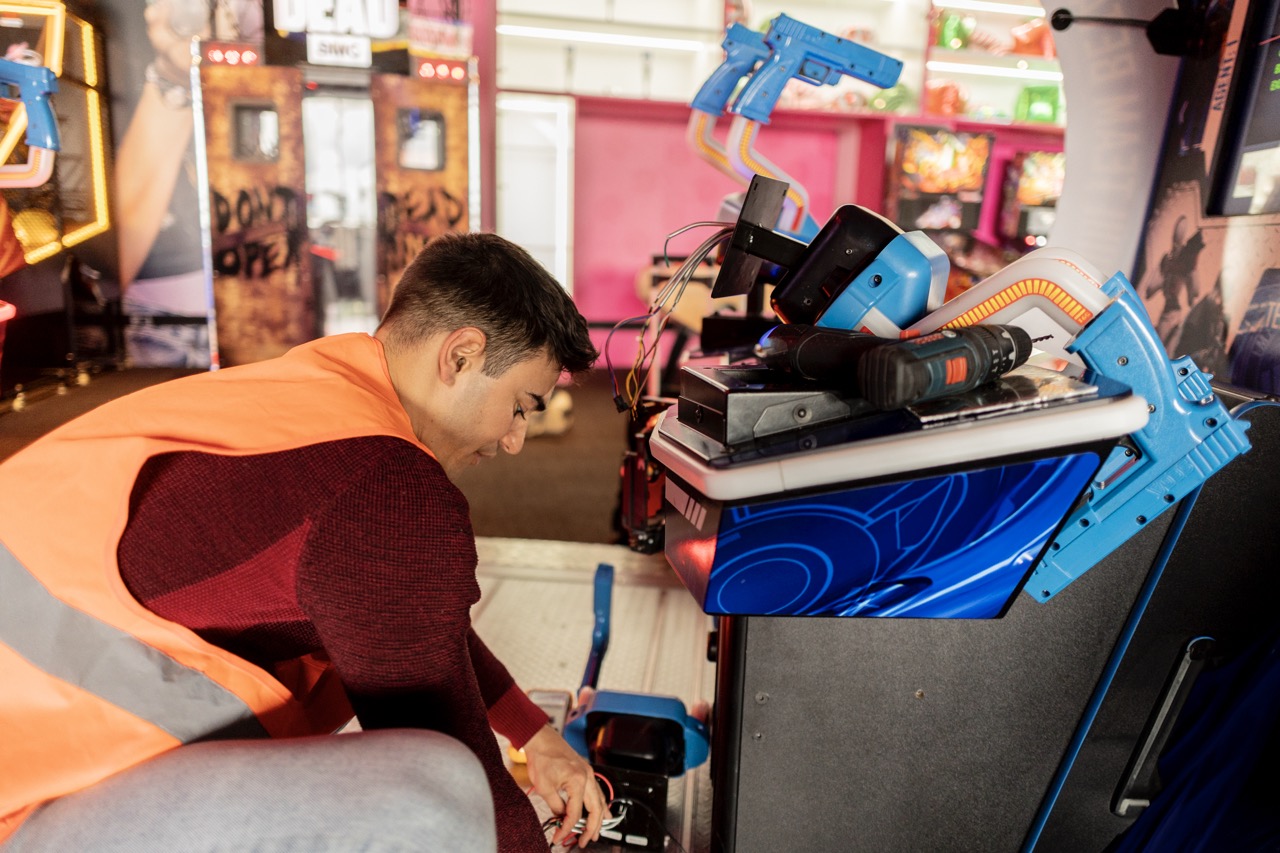Dance Dance Revolution (DDR) isn’t just another rhythm game; it’s a global phenomenon that has made its mark in arcades, living rooms, and dance competitions alike. With its vibrant graphics, infectious beats, and the exhilarating rush of mastering dance steps, DDR has captivated players of all ages since its debut in the late ’90s. But what exactly is it that makes this game so addictive and enjoyable? In this article, we’ll explore DDR’s appeal, its evolution from arcade to home, tips for mastering the game, and how it builds community among dancers around the world.
The Beat Drops: Understanding Dance Dance Revolution’s Appeal
At its core, DDR thrives on the simple yet thrilling concept of rhythm and movement. Players step on a dance pad with directional arrows in time with the music, creating a full-body experience that feels both physical and immersive. The infectious beats and catchy tunes keep players engaged, while the challenge of hitting the right steps at the right time fuels a satisfying sense of accomplishment. It’s a game that transforms music into a workout, making it enjoyable for those who might not typically consider themselves gamers.
Moreover, DDR provides a unique blend of competition and self-expression. Whether you’re playing solo or against friends, there’s always a sense of camaraderie and friendly rivalry. Players can show off their skills and even share their personal dance styles, making each session a showcase of creativity. The rush of adrenaline when hitting a challenging combo or achieving a new high score is nothing short of euphoric, making the game a perfect escape from the daily grind.
Lastly, the accessible nature of DDR caters to a diverse audience. Unlike many video games that require complex strategies or lengthy tutorials, DDR allows players of all skill levels to jump right in. From casual players just looking to have fun to hardcore enthusiasts striving for perfect scores, there’s always something for everyone. This inclusivity not only enhances its appeal but also fosters a welcoming environment where anyone can dance their heart out.
From Arcade to Home: DDR’s Evolution Through the Years
Dance Dance Revolution made its grand entrance in 1998 in Japanese arcades, and it didn’t take long for the game to become a sensation. Early versions featured flashy graphics and a limited song selection, but players were hooked on the novelty of dancing on a physical pad. As the game gained popularity, Konami expanded its catalog with more songs, modes, and a greater focus on multiplayer experiences. The arcade scene exploded, making DDR a staple of gaming culture.
With the advent of home consoles, DDR quickly made the leap from arcades to living rooms. The release of home versions allowed players to practice at their own pace and explore an even wider array of songs. The introduction of dedicated dance pads made the experience more authentic, and players could even create their own playlists. This shift led to a boom in DDR’s popularity, as fans could share the game with friends and family, making it a fun social activity.
Today, DDR continues to evolve in the digital age. The introduction of online features, mobile versions, and integration with social media has transformed how players engage with the game. Newer iterations often come with innovative mechanics and an expanded music library, keeping the experience fresh for long-time fans while enticing newcomers to join in. Whether you’re jamming to classics or the latest hits, DDR has adapted to remain relevant in the ever-changing world of gaming.
Steps to Success: Tips for Mastering Dance Dance Revolution
Getting good at DDR is all about practice, but there are some handy tips that can expedite the process. First off, familiarize yourself with the game’s interface and mechanics. Spend some time in training mode to get a feel for the arrows and the timing. Learning to read the charts and anticipate the steps can dramatically improve your performance. The key is to develop muscle memory, so your feet know where to go without needing to think about it.
Next, choose the right difficulty level. It’s tempting to dive into the hardest charts right away, but starting with easier levels can help build your confidence. You’ll want to gradually increase the difficulty as you improve, so you don’t get discouraged. Additionally, try to find songs that you enjoy and keep repeating them until you feel comfortable with the steps. Having fun is the ultimate goal, so sticking to tracks that make you want to move is crucial.
Lastly, don’t forget to focus on your posture and footwork. Keeping a relaxed stance while ensuring your feet land accurately will not only help you score higher but also reduce the risk of injury. Make sure to warm up before playing and stretch afterward to keep your muscles loose. With dedication and these tips in mind, you’ll soon be strutting your stuff with confidence and flair.
Community Vibes: How DDR Brings Dancers Together Online
One of the most beautiful aspects of DDR is its ability to connect people from all walks of life. With the rise of online platforms, players now have the opportunity to share their experiences, tips, and achievements with a wider audience. Social media groups and forums have sprung up, where fans can share videos of their best performances, discuss strategies, and even collaborate on creating custom songs. This sense of community fosters a shared passion and encourages players to keep improving.
Online tournaments and events have also become a popular way for players to showcase their skills. With the ability to compete remotely, dancers can participate in competitions without geographical limitations. These events often draw in large crowds, giving gamers a chance to connect, learn, and cheer each other on. The thrill of competing against others brings out the best in players, and most importantly, creates lasting friendships that extend beyond the game itself.
Finally, streaming platforms have opened up new avenues for DDR enthusiasts. Watching skilled players stream their gameplay can be motivating and entertaining. Many streamers host live sessions where they interact with viewers, answer questions, and share insights into their practice routines. This not only helps aspiring dancers improve but also strengthens the sense of community, as players can support and inspire one another in their DDR journeys.
Dance Dance Revolution has proven itself to be more than just a game; it’s a cultural touchstone that brings people together through the joy of rhythm and movement. From its humble beginnings in arcades to the social phenomenon it is today, DDR continues to evolve and captivate new generations of players. With a community that thrives on shared experiences and the thrill of mastering the beat, DDR is here to stay—encouraging everyone to step up, dance, and have a blast!










